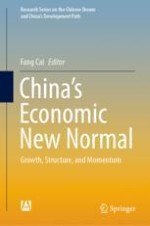2020 | OriginalPaper | Buchkapitel
10. Productivity Under the New Normal: Latest Estimates and Interpretations of China’s Total Factor Productivity
Aktivieren Sie unsere intelligente Suche, um passende Fachinhalte oder Patente zu finden.
Wählen Sie Textabschnitte aus um mit Künstlicher Intelligenz passenden Patente zu finden. powered by
Markieren Sie Textabschnitte, um KI-gestützt weitere passende Inhalte zu finden. powered by
